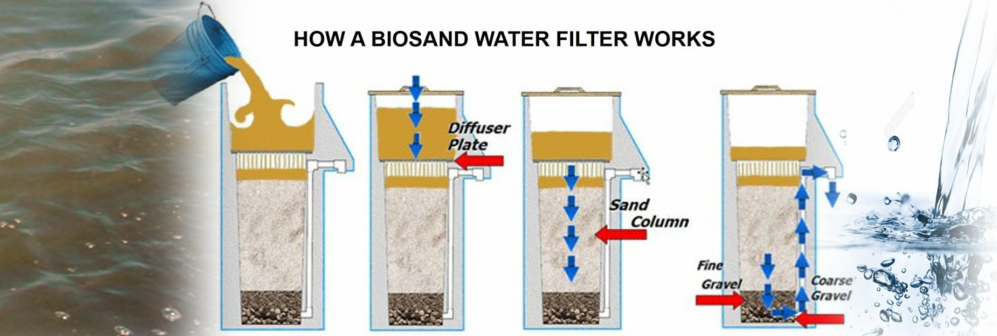Water Filtration Systems
The desire of REACT Missions is to minister to both the spiritual and physical needs of small communities and villages in rural Nicaragua. The majority of people living in these areas do not have access to pure water for drinking and cooking. There is adequate ground water but it is polluted by human and animal activities, resulting in water that is contaminated with parasites and waterborne diseases. As a result, chronic illness is common, especially among young children. Therefore dysentery, diarrhea, parasites, and other bacterial infections are unfortunately a normal part of life.
Providing clean drinking water by strategically placing Biosand Water Filters, and providing hygiene education. REACT Missions can eliminate one of the largest health threats to these communities. It would also allow them the opportunity to build trust among the rural population, and the opportunity to speak into their lives. This operation would not only drastically improve the quality of life, but also open doors to build lasting relationships and create openings to minister to the spiritual needs as well.
The Biosand Water Filter is made of concrete and other materials readily available almost anywhere in the world. It has a flow rate of 3/4 liter per minute, and has a life-span of several generations and requires minimal maintenance. The attached information by the manufacturer of the Biosand Water Filer system provides detailed and key information concerning this product.
We believe that partnering with REACT Missions will not only facilitate the placement of Biosand Water Filters, thus positively impacting the health of this lost people group, but will also expose them to the love of the Lord Jesus Christ.
What is the biosand filter?
The biosand filter is an adaptation of the traditional slow sand filter, which has been used for community water treatment for almost 200 hundred years. The biosand filter is smaller and adapted for intermittent use, making it suitable for households. The filter container can be made of concrete or plastic and is filled with layers of specially selected and prepared sand and gravel.
History of the biosand filter:
Dr. David Manz developed the household biosand filter in the 1990s at the University of Calgary, Canada. Dr Manz has trained many organizations on the design, construction, installation, operation and maintenance of the biosand filter. He also co-founded CAWST in 2001 to provide the professional services needed for the humanitarian distribution of the filter in developing countries. As of June 2009, CAWST estimates that over 200,000 biosand filters have been implemented in more than 70 countries around the world.
Biosand filter components:
How it works:
How well do biosand filters work?
Water naturally contains many living things. Some are harmless and others can make people sick. Living things that cause disease are also known as pathogens. They are sometimes called other names, such as microorganisms, microbes or bugs, depending on the local language and country. There are four different categories of pathogens that are shown in Table 1: bacteria, viruses, protozoa and helminths.
The physical characteristics of drinking water are usually things that we can measure with our senses: turbidity, color, taste, smell and temperature. Turbid water looks cloudy, dirty or muddy. Turbidity is caused by sand, silt and clay that are floating in the water. Drinking turbid water will not make people sick by itself. However, viruses, parasites and some bacteria can sometimes attach themselves to the suspended solids in water. This means that turbid water usually has more pathogens so drinking it increases the chances of becoming sick.
The following table shows the biosand filter treatment efficiency in removing pathogens and turbidity.



